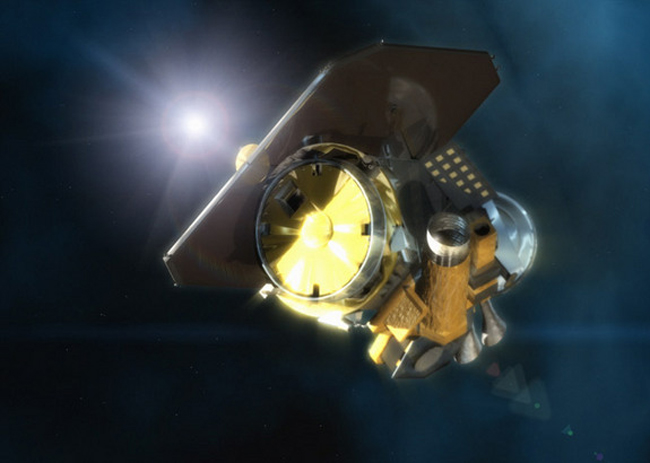
NASA's veteran Deep Impact probe may have chased its last comet.
The spacecraft's handlers lost contact with Deep Impact — which slammed an impactor into Comet Tempel 1 in 2005, made a close flyby of Comet Hartley 2 in 2010 and recently observed ISON, a "comet of the century" candidate — sometime between Aug. 11 and Aug. 14, mission team members announced last Tuesday (Sept. 3).
"The last communication was on August 8. After considerable effort, the team on August 30 determined the cause of the problem," principal investigator Mike A'Hearn of the University of Maryland wrote in a brief mission update Tuesday. "The team is now trying to determine how best to try to recover communication." [Photos of Comet ISON in Night Sky]
The issue stems from a software glitch that reset Deep Impact's computer, A'Hearn told the Nature News Blog, an arm of the prestigious scientific journal Nature. And things are serious, he added: Deep Impact is apparently spinning out of control after recent attempts to put the probe into hibernation mode were unsuccessful.
It's unclear how much time the mission team has to bring Deep Impact back in line. Depending on how the probe's solar panels are oriented, Deep Impact's batteries could run out of juice in a matter of days or keep going for several months, the Nature News Blog reported.
"How long we have depends on the state the spacecraft is in, and we don't yet know that," A'Hearn told SPACE.com via email. "Could be that it is too late already — could be we have another month or more."
Deep Impact launched in January 2005 on a mission to rendezvous with Comet Tempel 1. In July of that year, the spacecraft sucessfully smashed an impactor into Tempel 1, allowing scientists to study the icy object's composition.
Get the Space.com Newsletter
Breaking space news, the latest updates on rocket launches, skywatching events and more!
Deep Impact then flew by Comet Hartley 2 in November 2010, as part of a broad extended mission that NASA dubbed EPOXI (a mashup of "Extrasolar Planet Observation and Characterization" and "Deep Impact Extended Investigation").
The probe observed Comet Garradd from afar from February-April 2012, then snapped its first photos of Comet ISON on Jan. 17 of this year.
ISON is slated to skim just 724,000 miles (1.16 million kilometers) above the surface of the sun on Nov. 28. If the comet doesn't break up en route, it could put on a spectacular skywatching show around this time, experts say.
Deep Impact's first ISON viewing window lasted from mid-January to March 8 of 2013; another one ran from early July through early September. The current problems with Deep Impact have prevented the probe from sending its more recently gathered data home, A'Hearn wrote in the Sept. 3 status update.
Follow Mike Wall on Twitter @michaeldwall and Google+. Follow us @Spacedotcom, Facebook or Google+. Originally published on SPACE.com.
Join our Space Forums to keep talking space on the latest missions, night sky and more! And if you have a news tip, correction or comment, let us know at: community@space.com.

Michael Wall is a Senior Space Writer with Space.com and joined the team in 2010. He primarily covers exoplanets, spaceflight and military space, but has been known to dabble in the space art beat. His book about the search for alien life, "Out There," was published on Nov. 13, 2018. Before becoming a science writer, Michael worked as a herpetologist and wildlife biologist. He has a Ph.D. in evolutionary biology from the University of Sydney, Australia, a bachelor's degree from the University of Arizona, and a graduate certificate in science writing from the University of California, Santa Cruz. To find out what his latest project is, you can follow Michael on Twitter.









